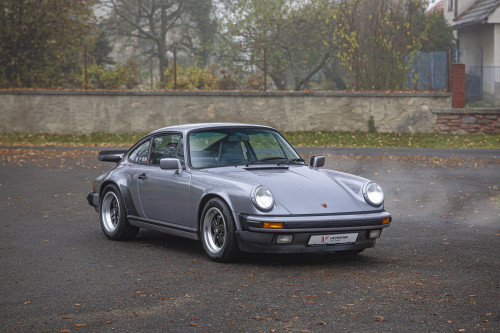Carroceria Borghi
Italian craftsman Aldo Borghi who apart from the Simca, he also worked on the bodywork of the Alfa Romeo Boano of Gral, settled in the city of Tigre, Buenos Aires. Aldo Borghi set up a body shop for special and competition cars. In those years there were few craftsmen dedicated to aluminium bodywork.
In his workshops a large number of cars were bodied which today are very valuable classics such as the Alfa Romeo 2900 "Ballena", the Alfa Romeo Spyder 6C 2500 "Paquito" (a very special car with very harmonious lines that appeared in the Sport car race at "La Costanera 1951", which was won by a mighty Allard-Cadillac); the Alfa Romeo 3000CM Carroceria Boano and it was restored and modified by Borghi after a crash; the Simca-Gordini T11 with which Jean-Pierre Wimille lost his life and the one used by Fangio in Rosario in 1948 were also were also bodyworked by Borghi and converted into a two-seater to race in the Argentinean Sport car categories in Argentina. Among all these works Borghi made a very special car on Porsche 356 mechanics.
Porsche Borghi
In 1963 Aldo Borghi received a Porsche 356 from a customer for restoration. This Porsche 356 was produced in 1953 as a 1954 model year with a 1.500 ccm type 546 engine producing 55 PS. After suffered a fire the car was completely destroyed. The restoration was practically impossible, but the mechanics and its running gear were still of interest to the Italo-Argentinean coachbuilder.
It must be taken into account that in those years the mechanics from Porsche engines were well known in Argentina for all the projects that were equipped with those same Porsche engines, such as the Justicialista, the Zunder and the famous Teram - which under Porsche licence made Argentina the only country in the world where Porsche was manufactured outside of Germany.
Borghi made sketches and drawings of different Sport cars on a 356 structure and finally he decided to make a body similar to the one that Rocco Motto had made a few years earlier in Italy for the Porsche Abarth. Despite having very similar lines, the Porsche bodywork designed by Borghi has differences with the Italian bodywork, probably to differentiate it from the European car.
This first version of the car, which had very nice and stylish lines, was completed in 1965, when the Porsche Abraths were already leaving the European racing. In Argentina the car did not participate in races and its owner had it until 1972. That year the car was bought by Borghi thinking of updating it. Afterwards, he took part in many meetings and sport club races. He raced in Rosario, Mar del Plata, San Nicolas, San Pedro. He participated in several rallies. The car stopped racing in the 90's and its owner disassembled it for restoration, which he never did.
The car was fully restored by his next owner to the 1963 Borghi Abarth specification. The car comes also with FIA papers, full history and book present.
| Production date | 1953 |
|---|---|
| Body Type | Coupe |
| Engine | 1.582 ccm, 110 PS, flat-4 |
| transmission | Manual |
| Steering | Left Hand Drive |
|---|---|
| Layout | Rear Wheel Drive |
| Color - exterior | Silver |
| Color - interior | Black / Grey |
| Miles/Kilometers shown | 3 km |
|---|---|
| Chassis / VIN | 51507 |
| Location - Country | Belgium |
| Location - City | Sint-Truiden |
2-door coupe body type; RWD (rear-wheel drive), manual 4-speed gearbox; gasoline (petrol) engine with displacement: 1582 cm3 / 96.7 cui, advertised power: 81 kW / 108 hp / 110 PS, torque: ca. 125 Nm; characteristic dimensions: outside length: 3880 mm, width: 1550 mm, wheelbase: 2100 mm; reference weights: base curb weight: 900 kg; top speed: 210 km/h (131 mph) (Abarth specs); accelerations: 0-60 mph 9.5 s, 0-100 km/h 10 s (Abarth specs)

Písek, Czechia

Písek, CZ

Písek, CZ

Písek, CZ

Písek, CZ

Písek, CZ